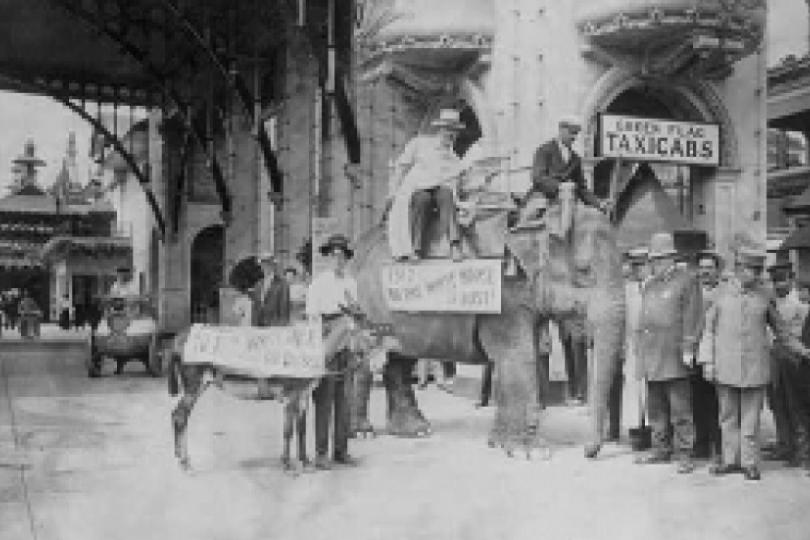Art as political industry
Editorial

On any given day, my inbox is packed with partisan pandering and theatrical promotions. As the co-creator of a project that betrays a love of juxtapositions, The Theater of Public Policy, perhaps it should be expected that I find myself on virtually every politician’s and art institution’s mass emailing list.
The ways in which the arts community and the political-industrial complex engage their audiences can seem oddly disparate. At the risk of being called fatally Pollyannaish, one could argue arts and politics share key goals: bringing attention to issues, getting people engaged with the larger world, and coalescing communities around a shared experience.
At the very least, we can all agree that both artists and politicos are consistently attempting to raise money from us.
All of which got me wondering about how different the arts industry might look and sound if they copied the political playbook. For better or worse, what if arts organizations operated like candidates for elected office?
Oppositional Tactics
As any student of social movement theory will tell you, few things motivate a large group of people like a good fight. Politicos figured this out a long time ago. Which is why so many of the fundraising emails they send include something like, “Don’t let the Tea Party win,” or “Help me stop Nancy Pelosi and her liberal allies.”
Imagine theaters modeling the same strategy to build support. Maybe an email from Joe Dowling with the line:
“I need your support if we’re going to stop Hennepin Theater Trust’s Broadway agenda.”
Or museums raising funds this way.
“Tell the Minneapolis Institute of Art it doesn’t speak for us. Give $5, $10, or whatever you can to the Museum of Russian Art to counteract their big, un-Russian dollars.”
Winner Takes it All
Just imagine if there were only room for one arts institution to be in power, and thusly they were more preoccupied with the next election than with their actual work. We’d see countless shows and exhibitions with the sole purpose of embarrassing or pigeonholing the “other side.” There would be a parade of wedge issue art by the institution in power, followed by well-timed issue ads on network television:
“Call your local potter and ask if she supports unglazed stoneware. This message brought to you by The Northern Clay Center.”
The Lesser of Two Evils
The problem now is that there are just too many arts options in virtually every discipline. If an audience does not like one painter, performance artist, or puppet show, he/she has enough alternatives to never even need to consider returning to the offending institution.
If we could narrow the fields down to two leading “candidates” in each discipline, we could enjoy more either/or choices in the arts.
“Well, I didn’t like what the St. Paul Chamber Orchestra did with Mozart’s Horn Concerto in D, but I just don’t trust the Minnesota Orchestra to protect my rights as a Schubertist.”
And come arts election season, your friends could besiege you with perfectly logical comparisons:
“The Ordway Center put on Miss Saigon. So if you support the Ordway Center, you support Miss Saigon. If you don’t think that’s a good musical, then you CANNOT support the Ordway as an institution.”
We probably won’t see these overt political tactics taking over the arts community any time soon. It all sounds too clunky, divisive, and in conflict with what art is supposed to be about.
The question then is if art and politics share any aims toward connecting people with their communities, the greater good, or a bigger message, why do we stand for one conversation being so hollow and callous? In terms of organizing and mobilizing, why don’t we hold political leaders to the same standards as artists? And what would this experiment look like flipped on its head, and politicians took a cue from the arts community?




